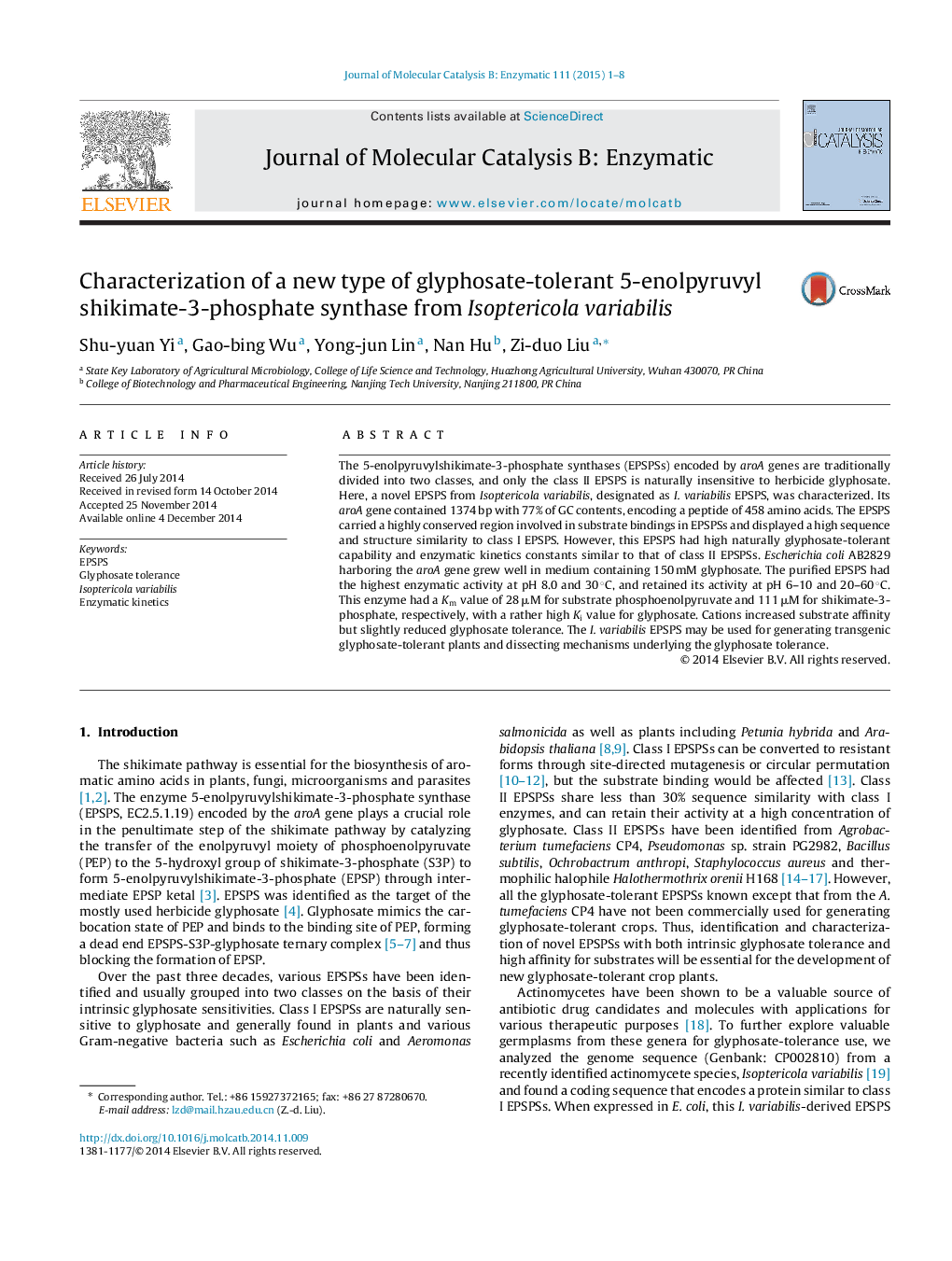| Article ID | Journal | Published Year | Pages | File Type |
|---|---|---|---|---|
| 69774 | Journal of Molecular Catalysis B: Enzymatic | 2015 | 8 Pages |
•The EPSPS from a recently identified actinomycete species, Isoptericola variabilis was characterized.•The I. variabilis EPSPS displayed a sequence and similarity to glyphosate sensitive class I EPSPSs.•The I. variabilis EPSPS displayed functional and enzymatic similarity to natural glyphosate tolerant class II EPSPSs.
The 5-enolpyruvylshikimate-3-phosphate synthases (EPSPSs) encoded by aroA genes are traditionally divided into two classes, and only the class II EPSPS is naturally insensitive to herbicide glyphosate. Here, a novel EPSPS from Isoptericola variabilis, designated as I. variabilis EPSPS, was characterized. Its aroA gene contained 1374 bp with 77% of GC contents, encoding a peptide of 458 amino acids. The EPSPS carried a highly conserved region involved in substrate bindings in EPSPSs and displayed a high sequence and structure similarity to class I EPSPS. However, this EPSPS had high naturally glyphosate-tolerant capability and enzymatic kinetics constants similar to that of class II EPSPSs. Escherichia coli AB2829 harboring the aroA gene grew well in medium containing 150 mM glyphosate. The purified EPSPS had the highest enzymatic activity at pH 8.0 and 30 °C, and retained its activity at pH 6–10 and 20–60 °C. This enzyme had a Km value of 28 μM for substrate phosphoenolpyruvate and 111 μM for shikimate-3-phosphate, respectively, with a rather high Ki value for glyphosate. Cations increased substrate affinity but slightly reduced glyphosate tolerance. The I. variabilis EPSPS may be used for generating transgenic glyphosate-tolerant plants and dissecting mechanisms underlying the glyphosate tolerance.
Graphical abstractFigure optionsDownload full-size imageDownload as PowerPoint slide
